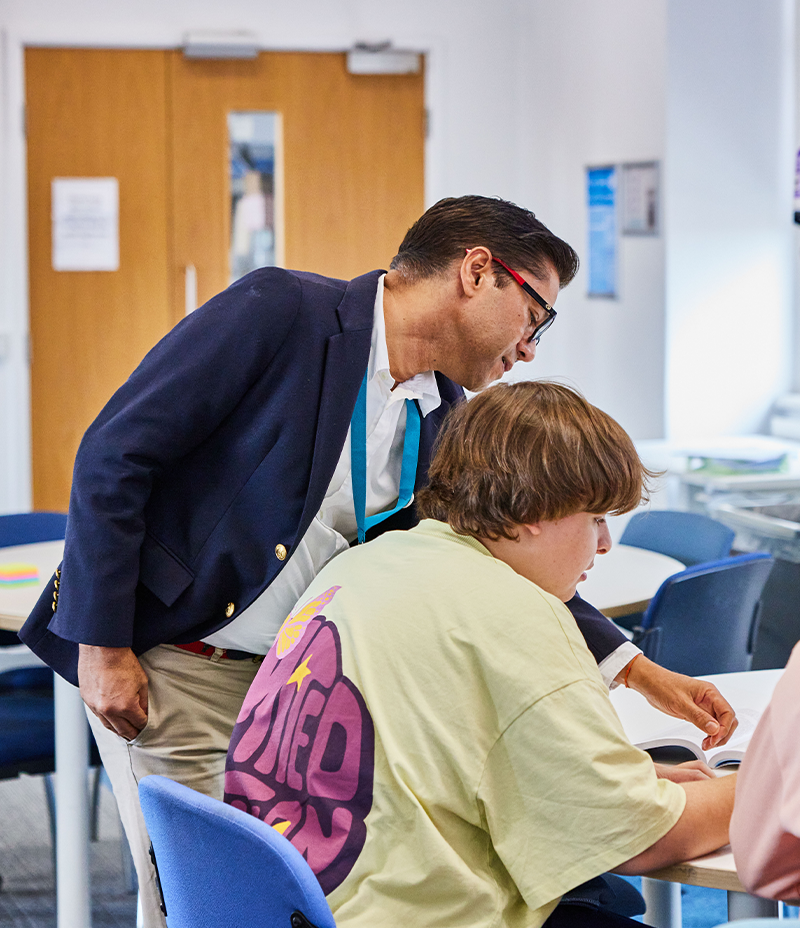Dr Gill Harrop is a senior lecturer in Forensic Psychology and the university lead for the Bystander Intervention Programme. In this Academic Blog she discusses the importance of 'everyday influencers' in developing a culture of positive masculinity.
In February 2024, the Shadow Education Secretary, Bridget Phillipson, outlined plans to place male mentors in schools to work with young men to counter negative attitudes they might be exposed to by influencers online.
While there is certainly research that suggests this might have a positive influence in tackling problematic attitudes and behaviour there is a need to look at how we can also make better use of the ‘everyday influencers’ in those young people’s lives.
We often mistakenly assume that positive role models are absent from the homes and lives of young males, when the reality is that many do already have access to males who model good behaviours, such as sports coaches and teachers.
Therefore, instead of trying to develop new, ‘custom-made’ influencers for young males, a more effective way forward may lie in better recognising the presence and value of these existing role models. By looking at the good work and positive results achieved by these ‘everyday influencers’, we can start to understand what is currently working well in tackling toxic masculinity, and the range of factors that affect the relationships between young males and those who work with them.
Who is a role model?

Role models are those who serve as an example, and set standards for others by motivating, inspiring or supporting them to behave in a similar way (Payne et al, 2002). While children’s first role models are usually their parents, by the time they become teenagers, other figures start to emerge as people of influence, including celebrities, athletes and gamers.
Young (2014) notes that boys are more likely to adopt a role model of the same gender, and the influence of that role model can affect young males’ thoughts, feelings, actions and attitudes as they try to imitate or adopt their behaviour. While this can be extremely positive, it also leaves the door open for some highly influential individuals to model their version of ‘success’ to impressionable young males online.
Exposure to such role models can lead to young males believing that misogyny, violence and poor treatment of women is acceptable and perhaps even inevitable steps on the road to achieving wealth and success.
It’s therefore vital to make the most of the positive male role models that currently exist in young males’ lives, to ensure that they have strong, relatable and healthy examples to look up to and emulate.
The value of role models in developing a culture of positive masculinity
Vandello & Bosson (2013) noted the intense pressure faced by many men and boys to constantly assert, prove and maintain their masculinity, with traits such as strength, domination and aggression often being highly prized. This can lead to young males feeling that they have to behave in this way to be seen as a ‘real man’, leading to behaviour and attitudes which are harmful to both young men and society as a whole (Harrop, 2023).
Embracing healthy, pro-social behaviour and promoting good mental health for boys and men therefore requires a new approach to what it means to be masculine, focusing on positive behaviours, and role models who can provide a positive, healthy example.
“Being a role model is the most important kind of educating.”
John Wooden
Lyle (2013) noted the key role that figures such as sports coaches can play in positively influencing young players, developing not just their game, but their character and life skills.
Soni Parchment is a coach with the Worcester Wolves Basketball Academy and is clear about what he wants to bring to his young players as both a coach and a role model.

“For me”, he says, “the main thing is making sure that I remain positive and let them know that if they make a mistake that it’s not the end of the world. I feel like I’ve definitely had an impact on the kids I’ve coached and stuck in their minds in a positive way.”
When asked what skills he tries to pass on to his players, he identifies confidence and coping with adversity as being key, making them “have more confidence to speak up, to learn to talk about things rather than argue”.
So how does he model those behaviours himself as a coach? “By staying positive, showing the players that there are ways out of issues by talking and they don’t have to argue or have a massive blow-out,” he says. “The earlier they learn this, the more it’ll help them in their personal life as well as their sport”.
As well as modelling positive behaviours himself, Soni acknowledges the vital part that role models have played in his own life, particularly the late basketball coach Brian Miller.
“He’s an example of a coach who was doing it for others”, says Soni. “I was always going to him for life advice, not just basketball tips, but anything you could think of, and he was always happy to have a say. Because of him, I could see how you can help others just by being there”.
He continues: “Often in parts of life, the role models are there, but they might not always be noticed because they’re not famous or on social media. Because of the people around me, I see how they are and their real-life experiences, and I try to be there in the way that others have been there for me.”
Developing future role models

Positive role models can inspire and motivate, develop good behaviours and habits and help to set and achieve goals. Going forward, it is vital that positive role models are recognised and celebrated, particularly those ‘everyday influencers’ who affect the daily lives of young males by not only teaching them how to behave, but through modelling that good behaviour themselves.
In this way, young males can see an alternative to the version of ‘success’ they might see from high profile influencers online, and have a clearer picture of what success looks like through being a good friend, teammate and a positive example of masculinity. By following that positive example, in time, they may even become positive role models themselves and the cycle continues.
Of course, there will be times when young males don’t have anyone positive to look up to, and that is when schools, parents and friends need to step in to actively seek out healthy, positive role models, to ensure that all young men have the chance to experience and witness positive and healthy masculinity and behaviours.
Young (2009) suggested the following tips for being a good role model:
- Genuinely care about young people and prioritise their development. Embrace the development of their character as well as their skills.
- Emphasise and reward people’s best efforts - don’t just focus on the end result.
- Emphasise and exhibit positive qualities such as determination, hard work, resilience and respect.
- Practice what you preach – adopt moral, ethical and healthy behaviours and model these for others.
- Treat others as you’d like them to treat you by modelling good attitudes and behaviours, even if you aren’t rewarded for doing so.
- Give your best effort.
- Take a genuine interest in others and actively listen to what they say. Invite others to share their thoughts, views and questions and let them know that their input has value.
To discuss any of the points in this blog further, please email Gill Harrop at g.harrop@worc.ac.uk.
Find out more about Psychology at Worcester.